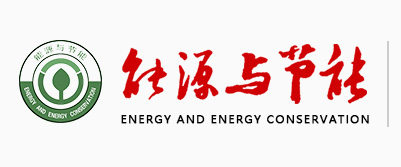202304
升温速率对杨木屑热解特性的影响
郭家明,解海卫,邓尚洵
(天津商业大学机械工程学院,天津 300134)
摘要: 将杨木屑在不同升温速率(10 ℃/min,15 ℃/min,20 ℃/min,25 ℃/min 和30 ℃/min) 下进行热解,基于TG
和DTG、温度特征值、失重率及热解产物产率分析不同升温速率下杨木屑的热解规律,利用FWO 法计算热解动力学参
数,对精制后的焦油进行GC-MS 检测,分析其主要有机成分及变化规律。实验表明,杨木屑样品主要失重的温度区间
为210 ~ 400 ℃。杨木屑的失重率与升温速率成正比,升温速率的提高会导致温度延迟现象加重。由FWO 法求得杨木屑
样品的热解反应活化能平均值为129.9 kJ/mol。热解产物产率表明,升温速率提高,固相和气相产物产率降低,液相产物
产率提高。GC-MS 检测结果表明,精制后的焦油主要成分为醇类、苯酚类、酯类、醛类、酸类、糖类、吡啶、烯烃类等
有机化合物,其中随着升温速率的提高,酚类、酸类、醇类和醛类的相对含量下降但酚类的表现最为明显。
关键词: 生物质热解;升温速率;热解规律;GC-MS 检测;有机成分
中图分类号: TK6 文献标志码: A 文章编号: 2095-0802-(2023)04-0017-05
Effects of Heating Rate on Pyrolysis Characteristics of Poplar Sawdust
GUO Jiaming, XIE Haiwei, DENG Shangxun
(School of Mechanical Engineering, Tianjin University of Commerce, Tianjin 300134, China)
Abstract: Poplar sawdust was pyrolyzed at different heating rates (10 益/min, 15 益/min, 20 益/min, 25 益/min and 30 益/min).
The pyrolysis law of poplar sawdust at different heating rates was analyzed by TG and DTG, temperature eigenvalue, weight loss
rate, and yield of pyrolysis products. The kinetic parameters of pyrolysis were calculated by FWO method. The refined tar was
detected by GC-MS test, and its main organic components and change law of pyrolysis were analyzed. The results show that the
main weight loss temperature range of poplar sawdust samples is 210 - 400 ℃. The weight loss rate of poplar sawdust is positively
proportional to the heating rate. The increasing of the heating rate would aggravate the temperature delay phenomenon. The
average activation energy pyrolytic reaction of poplar sawdust samples obtained by FWO method is 129.9 kJ/mol. The yield of
pyrolysis products shows that the yield of solid phase products and gas phase products decreases with the increase of heating rate,
while the yield of liquid phase products increases. GC-MS test results show that the main components of refined tar were alcohols,
phenols, esters, aldehydes, acids, sugars, pyridines, olefin and other organic compounds. With the increase of heating rate, the
relative contents of phenols, acids, alcohols and aldehydes decrease, but the phenols are the most obvious.
Key words: biomass pyrolysis; heating rate; pyrolysis law; GC-MS test; organic ingredients


